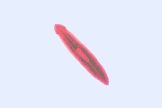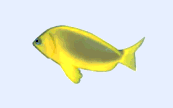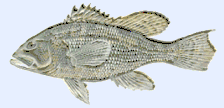|
中间性
-
导言
|
|
生物学脚注:植物与动物
|
|
在详细讨论人类的中间性之前,至少对较低等动物的“雌雄同体”投入匆匆一瞥可能是有用的。在自然界,存在着既拥有雌性性器官也具有雄性性器官的植物或动物物种,它们借此而增加了繁殖的机会。生物学家称这些生物物种为“雌雄同体的”生物。除了数也数不清的雌雄同体的植物以外,也存在着许许多多的双性动物,尤其在无脊椎动物和鱼类中这种双性动物更多。某些双性动物既能够作为雌性也作为雄扮演角色和繁衍后代,其他的双性动物则在条件许可时或需要时,改换它们的性别。这就是在我们这个星球上庞杂的生命多样性的另一个事例。在此不妨试举几例:
- 扁形动物门(phylum
Platyhelminthes)的涡虫既能发挥雌性动物的作用也能执行雄性动物的职责,既能产生卵子也能射出精子到它的交配对象体内。它们这些轮换的功能既是执行着雌性的也是扮演着雄性的角色。
- 一种叫Hypoplectrus的鱼在一个场合能够作为雄性发挥作用,然后在其他的场合作为雌性产生鱼卵。
- 巨大硬鳞(black
sea bass)在幼年可以是雌性,可是随后就可以转变成雄性。
- [(中国大陆读者比较熟悉的鱼类黄鳝,其生殖腺从胚胎到成体都是卵巢,只能产卵。但是,一旦产卵完毕,其卵巢逐渐转化为精巢,产生精子。这种从雌到雄的转变,在生物学上称为性逆转(sex reversal)。——译者注]
|
|

|

|

|
|
从左起:1.
扁形动物门(phylum
Platyhelminthes)的涡虫[自然大小:约4cm(约1.5英寸)];
2.一种叫Hypoplectrus 的鱼;3.
巨大硬鳞
From the left: 1. The flatworm phylum
Platyhelminthes (natural size: ca. 4cm/1.5
inches)
2. The fish Hypoplectrus 3. The black
sea bass
|
然而,当我们将目光投向较高的进化阶梯时,发现这种有益的雌雄同体渐渐变得罕见起来。在哺乳动物,雌性与雄性特征在同一个个体存在的现象是异常的和成问题的性发育状态。对于家畜饲养者再熟悉不过的最好例子是:所谓的雄化牝犊(freemartin)是雌性牛犊,她在出生之前与其雄性孪生犊共享着一定剂量的某些激素。这些“使雌性动物雄性化”的激素足以抑制她的雌性性器官的正常发育。其结果几乎总是导致不孕。然而,牛犊的孪生现象不会经常发生。
在此很少的举例想必足以有了说服力。以下的内容将阐述人类的中间性。
|
|
Intersexuality - Introduction
|
|
Biological Footnote: Plants and Animals
|
|
Before discussing human intersexuality in more detail, it may be useful to cast at least a cursory glance at “hermaphroditism” in lower animals. There are plant or animal species that possess both female and male sex organs and thereby increase their chances to reproduce. Biologists call these species “hermaphroditic”.
In addition to countless hermaphroditic plants, there are many double-sexed animals, especially among the invertebrates and fish. Some can act and reproduce as either females or males, others change their sex as the situation allows or requires. This is another example of the enormous diversity of life on our planet. To give just a few examples:
- The flatworm phylum Platyhelminthes can function as either a female or male, producing eggs or inserting sperm into his counterparts.These, in turn, can also act as females or males.
- The fish Hypoplectrus can act as a male and release sperm in one instance and then, in the next instance, act as a female and release eggs.
- The black sea bass may start life as a female and then turn into a male.
However, as one moves higher on the evolutionary ladder, this useful hermaphroditism becomes increasingly rare. In mammals, the existence of both female and male characteristics in the same body is an atypical, problematic development. The best example is well known to cattle breeders: The so-called
freemartin is a female calf that, before birth, shared certain hormones with its male twin. These “masculinizing” hormones were enough to prevent the normal development of its female sex organs. The result is almost always sterility. However, twinning in cattle does not occur very often.
These few reminders must suffice here. The following text restricts itself to human intersexuality.
|